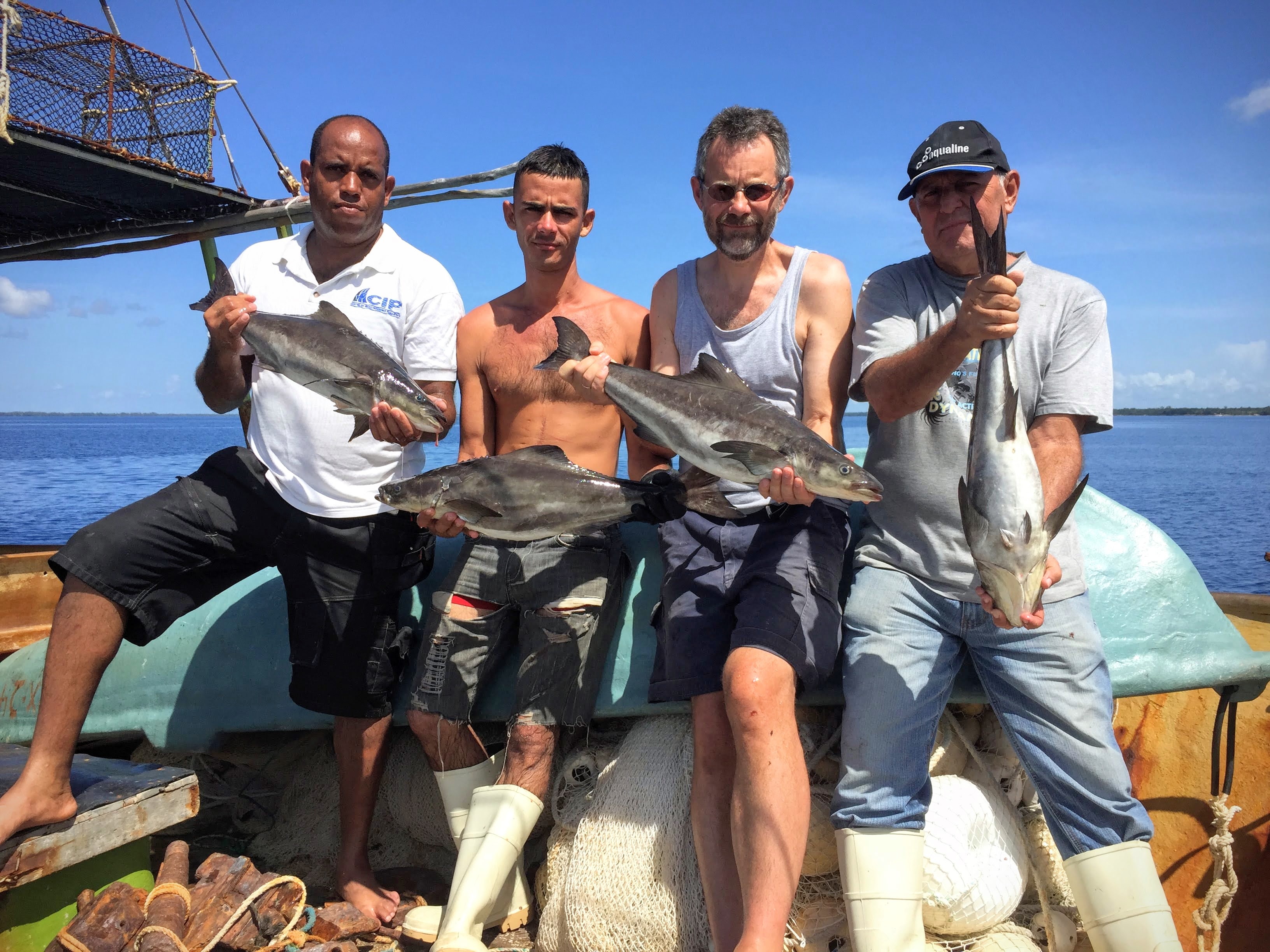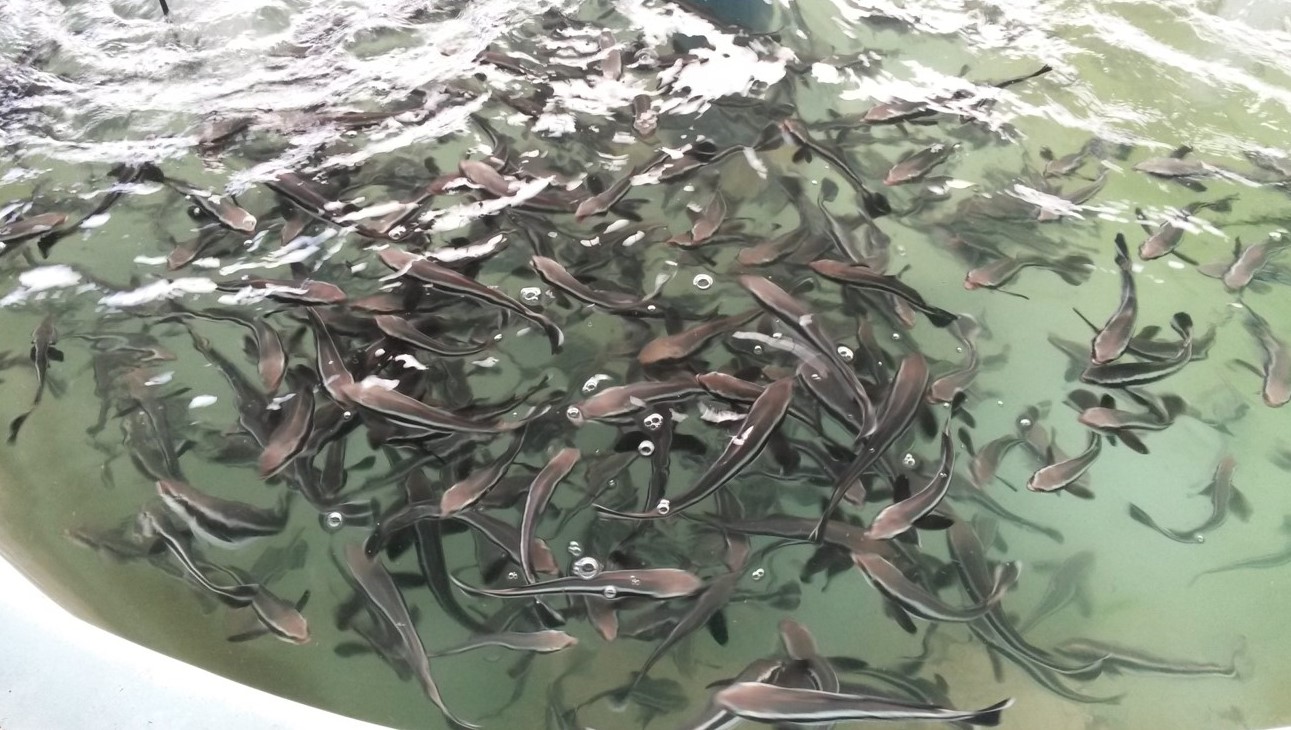How scientists established fish farming in the Bay of Pigs

Two of the pens in the Bay of Pigs – both with an extra net to protect the farmed fish from predatory fish such as barracuda and sharks.
Photo: Ørjan Karlsen / Institute of Marine ResearchPublished: 08.01.2021 Updated: 29.01.2021
The Bay of Pigs, February 2013: Bjørn Tore Lunestad is hard at work in Cuba. But as a marine scientist, his aims are more peaceful than those of the invasion force 52 years earlier.
In fact, he is on the lookout for somewhere to establish a fish farm.
“Our task was to cooperate with Cuba to get marine aquaculture up and running using Norwegian technology combined with Norwegian and Cuban expertise”, says Lunestad.
Step one: select the species
The first question the Norwegian and Cuban scientists had to work out was which fish to farm. Which species should they put into the pens?
The team consisted of a group of researchers from Cuba and a group from Norway, and they both assessed various species against a number of criteria: price; how easy they were to farm; resistance to diseases; and their feed conversion ratio.
“It also had to be a species that was native to the area. The Cuban and Norwegian scientists both concluded that the cobia would be a good fit”, says Lunestad.

The cobia, or sergeant fish, is a semi-fatty fish whose fat content is in between that of cod and salmon.
“It has white flesh, but it has slightly more intramuscular fat than Norwegian cod. And it tastes delicious”, says Lunestad.
Step two: find a suitable location
Once the researchers had decided which species to farm, they had to work out where to farm it.
“That was a long process, and we considered many different locations. It had to be sheltered from the full force of the weather – after all, Cuba regularly experiences hurricanes. And the strength of the current and the water circulation needed to be right”, says Lunestad.
In addition, good infrastructure was required, which meant road access and a quay. And it couldn’t be somewhere reserved for military activities.
“In the end we settled on the Bay of Pigs”, says Lunestad.
The bay, which is most famous for the failed invasion of 1961, is oriented almost exactly north-south on the south coast of Cuba, which provides good shelter from tropical storms.

Step three: get hold of fish
Pens and other equipment were supplied from Norway, and the farm in the Bay of Pigs was assembled on land and then installed in April 2014. The scientists had intended to use cobia from Cuba, but since fishers could obtain a higher price for their fish on the local market, the cobia were instead imported from Ecuador.
“In Ecuador we took samples of the fish to check that we wouldn’t be introducing any nasty diseases, such as nodavirus”, says Lunestad.
Next the juvenile fish were transported to Mariel, just outside Havana, where they were put in quarantine, before finally going to the Bay of Pigs and being put in the pens.
“We had to install an extra net outside the pens in order to keep predators such as barracuda and sharks out”, he says.

Step four: wait for the fish to grow big
Another thing that makes fish farming more challenging in Cuba than in Norway is the water temperature.
“The air temperature was 30 degrees, and so was the water temperature. That means there is less oxygen dissolved in the water, so the concentration of fish in the pens has to be lower”, says Lunestad.
After just under a year, the cobia had reached a weight of four kilos, which meant they were ready to be slaughtered.
Final step: sell the fish
Once the fish had been slaughtered, the scientists had to sell them so that the proceeds could go back into the project. They therefore agreed to supply the cobia to several hotels in the tourist town of Varadero. In order to generate interest in cobia, they invited all of the head chefs in Varadero to a big event.
“They all had to create a cobia dish, and then the best one was chosen. They made 50-60 wonderful dishes”, says Lunestad.
Once the tourists in Varadero had eaten the cobia, the project and Lunestad’s role were supposed to come to an end.
“Norway’s aim was to give Cuba all of the tools it needed to get marine aquaculture up and running, and after that Cuba would be responsible for the next phase. Cuba imports a lot of food, including seafood. It would be much better if they could produce it themselves”, says Lunestad.
The next phase: a hatchery
However, the work of the IMR scientists on the Caribbean island wasn’t quite done. A new development project, led by Torstein Harboe, has been lined up, and it is due to start in 2021. The project, which will last for three years, will increase expertise on aquaculture in the region – both in Cuba and in other Caribbean countries.
In addition, the scientists will breathe life into a hatchery that uses Norwegian technology, which was built while Lunestad was in Cuba.
“The hatchery has been established with a brand new building and equipment for broodstock, an egg incubator, larval rearing tanks, start-feeding tanks and early growth tanks. The hatchery will have high capacity, and our task now is to get the facility up and running and build up expertise”, says Harboe.
